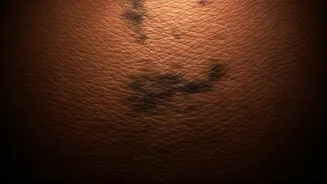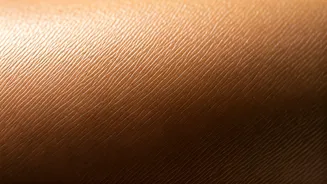Mercury's Toxic Touch
Mercury, a heavy metal known for its toxicity, poses significant health risks when it enters the human body through skin application. Skin-lightening creams
are a major source of mercury exposure. The substance gets absorbed through the skin, where it then infiltrates the bloodstream. This direct entry can lead to various health problems. Mercury's presence in creams often goes unnoticed, as it may not be explicitly listed on the ingredients label, or its quantity might exceed legal limits. Consequently, users are exposed to dangerous levels of this metal. This exposure can be particularly dangerous when these creams are used over large areas of the body or over long periods. Awareness of the potential dangers is critical, and consumers should be cautious and educated about the products they use to prevent mercury poisoning. Choosing safe alternatives and understanding product labels become crucial steps in protecting one's health.
Kidney Damage Concerns
One of the most concerning health issues associated with mercury exposure from skin creams is kidney damage. The kidneys are vital organs responsible for filtering waste and toxins from the blood. When mercury enters the bloodstream, it can accumulate in the kidneys, causing significant harm. This can manifest in several ways, from subtle changes in kidney function to severe kidney failure. The damage may not always be immediately apparent; long-term exposure can lead to chronic kidney disease. Furthermore, the effects of mercury can be cumulative, meaning that even small amounts of exposure over time can lead to serious health problems. The use of mercury-containing creams is therefore not only a cosmetic concern but also a serious health risk. Monitoring kidney health and being alert to any signs of kidney problems are necessary steps if one has been using these products. Seeking medical advice and undergoing regular check-ups is extremely important if there is any suspicion of mercury exposure.
Identifying the Risks
Consumers often encounter challenges in recognizing mercury-laden skin creams. These products may not always list mercury as an ingredient, and instead may use misleading terms. Some creams may claim to lighten the skin quickly, which often signals the presence of mercury. Checking the product label is crucial, and one should look for terms like 'mercurous chloride' or other mercury-related compounds. Also, checking for a lack of ingredient details indicates caution is needed. The packaging might appear attractive, but this does not guarantee product safety. Consumers should be wary of products that promise rapid skin lightening, as this is often a sign of high mercury content. If a product seems too good to be true, it might be hiding harmful ingredients. Checking the manufacturer's reputation, and reading product reviews can also help determine a product's safety. Prioritizing products from trusted manufacturers and avoiding those with unclear ingredient listings helps minimize risks.
Prevention Measures
Preventing exposure to mercury-laden products involves several practical steps. The most important step is carefully selecting skin creams and other cosmetic products. Consumers should always read product labels and avoid those that contain mercury or related compounds. Secondly, it is important to purchase products from reputable sources and avoid buying from unverified sellers. It is also wise to be cautious about products that promise fast results, since these often contain harmful ingredients. Consumers should also consider consulting with a dermatologist or healthcare professional to get advice on safe skincare products. They can offer guidance on products that are free from harmful substances like mercury. Also, if there are any signs of mercury exposure, like skin irritation or other health concerns, it is necessary to stop using the product immediately and seek medical attention. Educating oneself about the risks associated with mercury and prioritizing safe products can help to avoid this serious health hazard.











